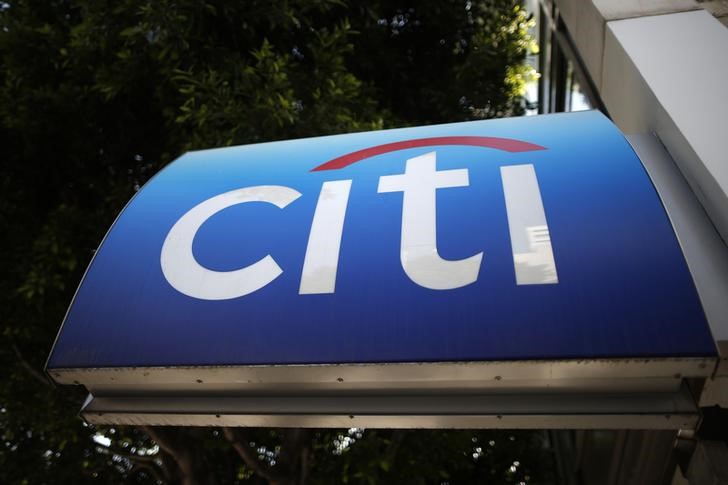© Reuters. FILE PHOTO: A Bank of America logo is pictured in the Manhattan borough of New York City, New York, U.S., January 30, 2019. REUTERS/Carlo Allegri/File Photo
By Manya Saini and Nupur Anand
(Reuters) -Bank of America’s third-quarter profits beat Wall Street estimates as it joined other big lenders in earning more on loan interest payments, while also benefiting from a better-than-expected performance in investment banking and trading.
The second-largest U.S. lender said the national economy and consumer spending on travel and goods were slowing but remained resilient despite rising interest rates. The bank warned that the macroeconomic outlook was uncertain and corporations continue to hold back on deals.
“Our team of economists predicts a soft landing, with a trough in the middle of next year,” CEO Brian Moynihan told analysts.
BofA profits climbed 10% to $7.8 billion, or 90 cents per share, beating analysts’ expectations of 82 cents, according to IBES data from LSEG.
Its shares were last up 3.11% in afternoon trading, outperforming a near 1.8% rise in the Banks Index, which tracks a basket of large-cap bank stocks.
Consumer banking revenue increased 6% year-on-year to $10.5 billion, while customer spending on debit and credit cards grew 3%. Americans’ finances are beginning to flag, but delinquencies were still low compared to historical levels, the bank said.
On Friday, lenders including JPMorgan Chase (NYSE:), Citigroup (NYSE:) and Wells Fargo said U.S. consumers remain in good shape even though spending has slowed and delinquencies were rising.
The country’s largest lenders have enjoyed surging net interest income (NII) as the Federal Reserve has hiked interest rates to fight inflation, allowing them to charge more on loans.
Likewise, BofA said net interest income rose 4% to $14.4 billion and said fourth quarter NII should be around $14 billion, pushing its full year NII growth to 9%.
Its investment banking and trading units were also a highlight.
Total investment banking fees jumped by 2% to $1.2 billion, bucking an industry-wide slump. Sales and trading revenue rose 8% to $4.4 billion, its highest in more than a decade. Management did not elaborate on trading income in this quarter but in the past has said that investments in that segment have yielded results.
Bank of America’s fixed-income instruments, currencies, and commodities (FICC) revenue increased by 6%, driven by improved trading in credit and mortgage products which partially offset weaker trading in currencies and rates.
In comparison, Goldman’s FICC revenue was down 6% while JPMorgan’s was up by 1%.
The bank still has a good deals pipeline, but corporate America is seeking more certainty over the macroeconomic outlook and it is difficult to say when investment banking activity will bounce back, Borthwick said.
“For as long as we’ve got the volatility, it’s going to stay in this kind of a range,” he added.
Headcount was expected to be flat from third-quarter levels. That has allowed the bank to keep down expenses, which are expected to decline by another $200 million in the fourth quarter to $15.6 billion.
“We’ll see how that develops over the course of the next year,” Borthwick said.
SECURITIES PORTFOLIO
Three U.S. bank failures this year put focus on banks’ securities holdings, as paper losses on bond portfolios accumulate.
BofA said it had unrealized losses of $131.6 billion on securities held until maturity in the third quarter, growing from nearly $106 billion in the second quarter.
Analysts said it was unlikely BofA will be forced to sell the securities at a loss. Yet the low-yielding assets have also constrained BofA’s ability to put deposits to work elsewhere to make bigger profits.
BofA’s provision for credit losses grew by $336 million in the third quarter in line with lending growth.
BofA’s revenue, net of interest expense, increased 3% to $25.2 billion.
Read the full article here
